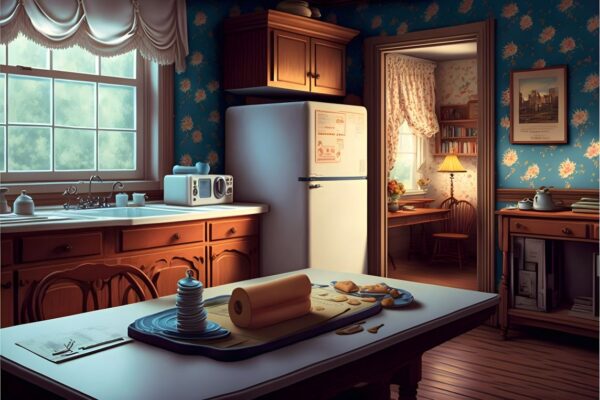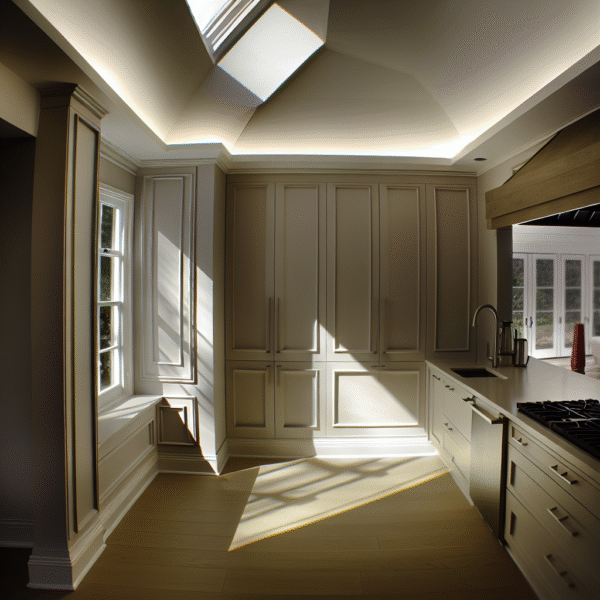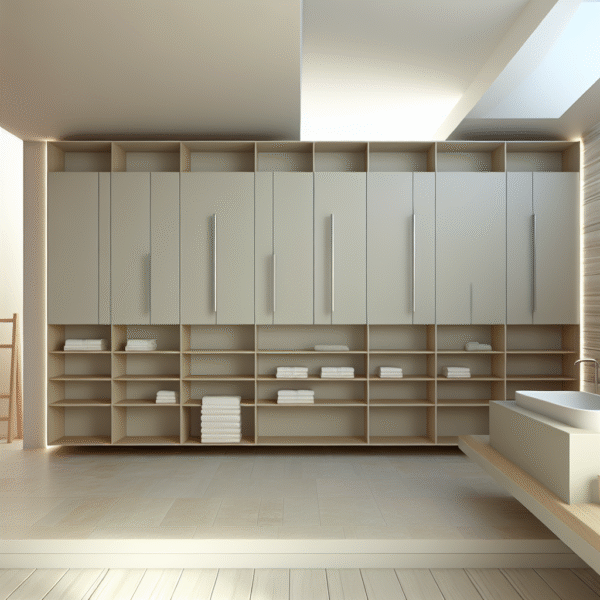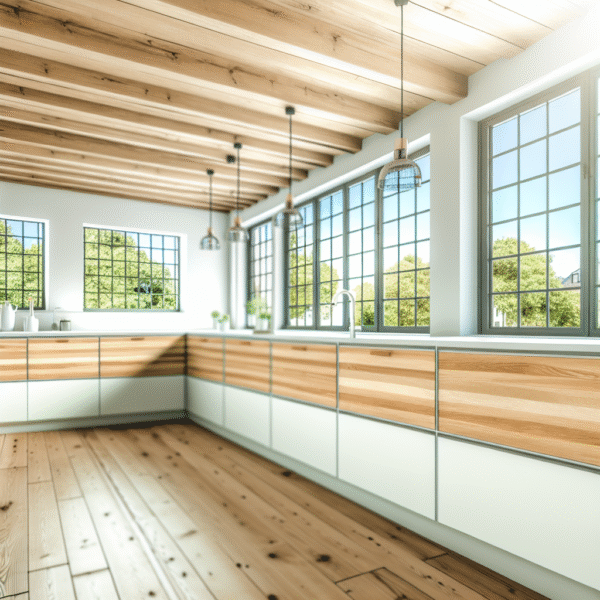Why Bathroom Cabinet Colors Matter
Bathroom cabinet colors play a crucial role in shaping the style, mood, and function of your space. Whether you’re a solo traveler returning home after months abroad or a family embarking on a renovation journey, updating your cabinet hues can dramatically elevate your bathroom. Since this is the room where your day begins and ends, refreshing the cabinets can introduce brightness, personality, and depth—without the cost of a full remodel. Design-savvy homeowners and DIYers alike are turning to fresh tones and trendy palettes to reflect their lifestyles and increase their home’s value.
Beyond aesthetics, the right bathroom cabinet colors can impact lighting, influence mood, and even enhance resale appeal. From coastal seafoam to forest-inspired sage, color transforms a functional space into a reflection of your surroundings and identity. In this guide, informed by trends across regions like Bend, Oregon, and Santa Cruz, California, we highlight the top hues and offer expert tips for choosing the perfect color palette for your bathroom.
Classic Neutral Tones: Timeless Versatility
From Brooklyn brownstones to Bozeman eco-lodges, neutral bathroom cabinet colors remain a popular and safe choice. Shades like dove gray, soft taupe, greige, and warm white offer unmatched flexibility. These tones work seamlessly with almost any wall or tile color, making them especially ideal for high-traffic bathrooms or rental properties where universal appeal matters.
In family-focused areas such as Boulder, Colorado, homeowners use creamy neutrals to highlight natural wood finishes and stone tile. For modern mountain style, interior designers in Salt Lake City often suggest pairing soft neutral tones with matte black or brushed bronze hardware. This combination creates a light-filled, inviting aesthetic—especially important in bathrooms that lack windows or receive limited daylight.
Short-term rental hosts near destinations like Yosemite or Sedona favor neutral cabinets for their ability to photograph well and match any décor. To add visual interest, try textured finishes or a two-tone design—soft beige uppers with taupe base cabinets echo the natural palette of California’s Central Coast and keep the look grounded, not bland.
Moody Blues and Greens Reflecting Nature
Earth-inspired tones like deep navy, forest green, and rich teal are gaining popularity in bathrooms where the goal is relaxation and a connection to nature. These bathroom cabinet colors mirror outdoor elements—sky, water, and foliage—and work beautifully in cabins, mountain retreats, and coastal escapes.
In the Pacific Northwest, homeowners in places like Seattle and Portland are leaning into shades like “Hale Navy” and “Nocturne Blue.” When paired with unlacquered brass or marble accents, these colors bring cozy depth without overwhelming the room. Tip: balance darker hues with light countertops or white walls to prevent the space from feeling enclosed.
Travelers inspired by the Blue Ridge Mountains in Asheville often incorporate sage green or olive cabinets into their designs. These tones pair effortlessly with handmade terracotta floor tiles and modern open shelving. Add a few indoor plants or woven textures for a spa-like space with rustic charm.
Moody tones also perform well on camera, perfect for capturing that before-and-after renovation journey on social media or real estate platforms. Swatch test these hues in both natural and artificial light—lighting drastically affects how these rich shades appear throughout the day.
Soft Pastels and Retro Charm
Pastel bathroom cabinet colors such as mint green, powder blue, and petal pink are enjoying a fresh revival, especially in homes inspired by mid-century modern or bohemian design. These soft tones inject a lighthearted, nostalgic feel while still offering practical charm. They’re perfect for bathrooms that aim to feel bright, cheerful, and full of personality.
In Palm Springs, residents blend robin’s egg blue cabinets with geometric tile backsplashes to echo the spirit of desert modernism. This vintage-meets-modern trend is also showing up in homes influenced by the artsy vibes of Marfa, Texas, or Taos, New Mexico. Pair pastels with round mirrors, brass sconces, and quartz countertops for a contemporary twist on retro flair.
For families with young children, pastel bathroom cabinets help create a playful and welcoming atmosphere. In San Diego neighborhoods like North Park or Mission Hills, mint and blush tones are often matched with colorful towels and beachy wallpaper for a vibrant, functional space. Maintain design balance with natural wood flooring or minimalist tile to prevent the room from appearing too themed.
Earthy Terracottas and Warm Ochres
As global design trends move toward organic materials and grounded color schemes, earthy bathroom cabinet colors like terracotta, rust, ochre, and clay are becoming increasingly popular. These warm hues evoke destinations like Arizona’s red rock canyons and France’s ochre cliffs, bringing natural richness to the bathroom.
In desert towns such as Joshua Tree and Tucson, rust-colored cabinets combined with white plaster walls and handcrafted ceramics create a serene, minimalist look. Homeowners living off-grid near national parks are embracing these tones to mirror the outdoor landscape while supporting eco-conscious living.
For family homes near Utah’s national parks, earthy cabinet colors offer a stylish alternative to cooler tones. Locals often prioritize health and sustainability by choosing low or zero VOC paints, sourced from suppliers like Earth Paints Co-Op in Salt Lake City. Earth tones naturally complement Southwest art, woven textiles, handmade tiles, and rustic wood finishes—ideal for anyone wanting to create a globally inspired bathroom grounded in regional character.
Bold and Dramatic: Jewel Tones and Black
If you’re after a bold statement, look no further than jewel-inspired bathroom cabinet colors like emerald green, plum purple, ruby red, or deep black. These dramatic hues add rich contrast and luxe sophistication, especially in powder rooms or ensuite bathrooms where design can be daring.
In New Orleans’ Garden District, homeowners combine emerald cabinet fronts with vintage lighting and classic checkerboard floors, echoing the city’s glamor and artistic flair. Meanwhile, Lake Tahoe homes incorporate matte black cabinets into ski chalet bathrooms with stunning success, pairing them with natural wood accents and freestanding tubs.
If space is limited, choose high-gloss or satin finishes to reflect light—especially useful with deep hues like black or burgundy. In Brooklyn, designers are pairing jewel-toned cabinets with subtle wallpaper and minimalist fixtures for a polished, urban aesthetic. For best visual flow, match your bold cabinets with warm-toned hardware and soft LED lighting.
Tips for Choosing the Perfect Bathroom Cabinet Color
Selecting the right bathroom cabinet colors is an exciting step in any remodel or update, but requires strategy. Here are key pro tips to guide your decision-making:
- Test in multiple lighting conditions: Colors change in appearance under different lighting. Sample paint swatches in both morning and evening light.
- Capture your environment: Match your cabinet color to regional cues. Think oceanic tones for beach towns or rich neutrals in woodsy locales.
- Coordinate, don’t duplicate: Rather than matching walls and cabinets exactly, opt for complementary tones from the same color family for added depth.
- Consider resale or rental goals: Stick to versatile, crowd-pleasing colors if you plan to sell or rent in the near future.
- Seek local expertise: Visit hometown paint stores or boutique design shops in places like Asheville, Sedona, and Taos for curated color ideas unavailable online.
As design trends evolve, bathroom cabinet colors remain a key element for expressing personality, improving functionality, and increasing value. So whether you’re refreshing your coastal bungalow or transforming a mountain retreat, select hues that tell your story—and connect your space to where you’ve been, and where you’re going.





